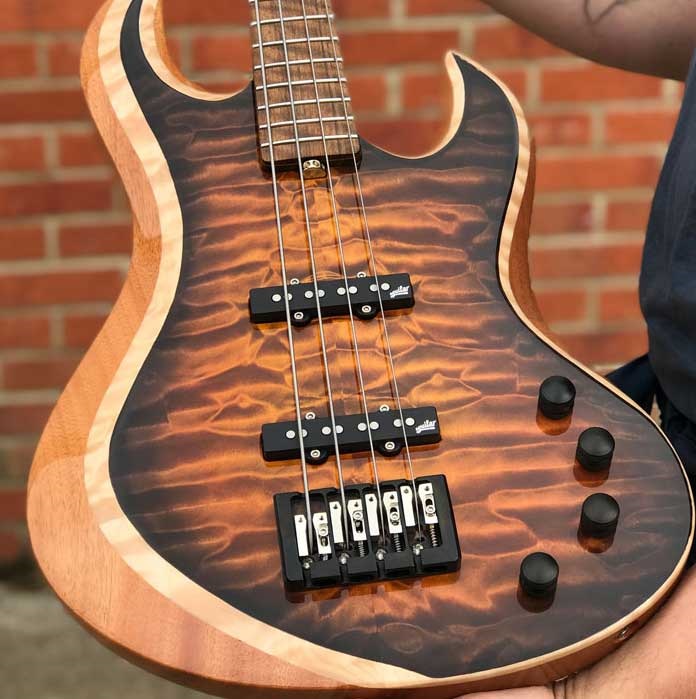Fretboards need to be cleaned every so often, and that’s just common sense. However, there is also something called “conditioning” a fretboard.
Why would you condition a fretboard?
The two main reasons to condition a fretboard is to:
Keep color consistency
Boards that aren’t conditioned fade, but not evenly since the player (you) prefers to play certain parts of the board more than others. Regular conditioning can slow the fading where it’s not made so obvious where you play the most.
Prevent board splitting/cracking
Boards that get too dry will eventually split or crack apart. This doesn’t mean the board unplayable at first, but it eventually will become unplayable once frets or binding start shifting loose.
What boards typically DO NOT need conditioning?
A sealed maple fretboard usually does not need conditioning since the board already has sealant applied to it when the instrument was originally constructed.
Unless you very specifically requested an unfinished maple board, it is most likely sealed. If it weren’t, the board would turn green and/or a dingy gray color fairly quickly.
You still need to clean a maple board, no question about that, but it typically does not need conditioning.
Special note for Music Man basses with maple fingerboards: These are oiled and not sealed. Music Man describes their finish as a “gunstock oil and wax blend,” according to them.
What is needed for proper conditioning?
The Dunlop System 65 Kit has everything you need to condition a board properly. It includes formula 6532 “Deep Conditioner Oil” along with instructions on how to use it for no-fuss, easy conditioning.
If you want a water-less conditioner (which some prefer,) Zymol Bridge Fret & Finger Board Protectant is what you want.
When should you condition?
If the instrument is played regularly, about once every 90 days. However, you can also judge when to do it visually.
The easiest way to judge visually when you should condition is by snapping a photo of your rosewood board with your phone right after you condition, providing you with a reference. After 90 days, take another photo of your board dry (preferably under the same lighting you used prior) and compare it with the photo you took before. Compare the two photos and you will know quickly whether another conditioning is needed or not. If the board still looks OK to you, give it another month.




I condition my fretboards whenever I change strings, which for me is every 2-3 months. I use the Dunlop System 65 mentioned in the article. Works great.
Lemon Oil. Works great on Rosewood, Wenge and Ebony. Apply whenever you change strings. Don’t forget to humidify!
Double-boiled linseed oil – just a touch – remove excess thoroughly – once a year.
I use either orange oil or olive oil, both work great and are non toxic
And if it’s not a maple board?
1977 Rickenbacker 4001, 1983 US Fender Jazz 62RI, 1992 Yamaha TRB6P… all fretboards in great condition… never done any more than wipe them down with a dry cloth after changing strings… clean instrument less and play more! 😉
“óleo de peroba” (made in Brazil).
https://pt.wikipedia.org/wiki/%C3%93leo_de_Peroba
Very nice for fretboard, body AND strings too!!! (to avoid fat in strings)
I usually condition the fingerboard (rosewood or ebony) twice a year depending on the use and visual condition. Before applying any oil, dress the board using 0000 steel. This removes any dirt or residue and opens up the pores of the wood. Use a blow gun or tack cloth to remove steel filings. I use “fret factor” made from tree oils (great stuff), linseed if it’s really dry, and or lemon oil. I have had success using all 3 products. The age of my basses (13) range from 60 years to 1 month old with 1 maple neck. Keep the wood hydrated few to no problems!